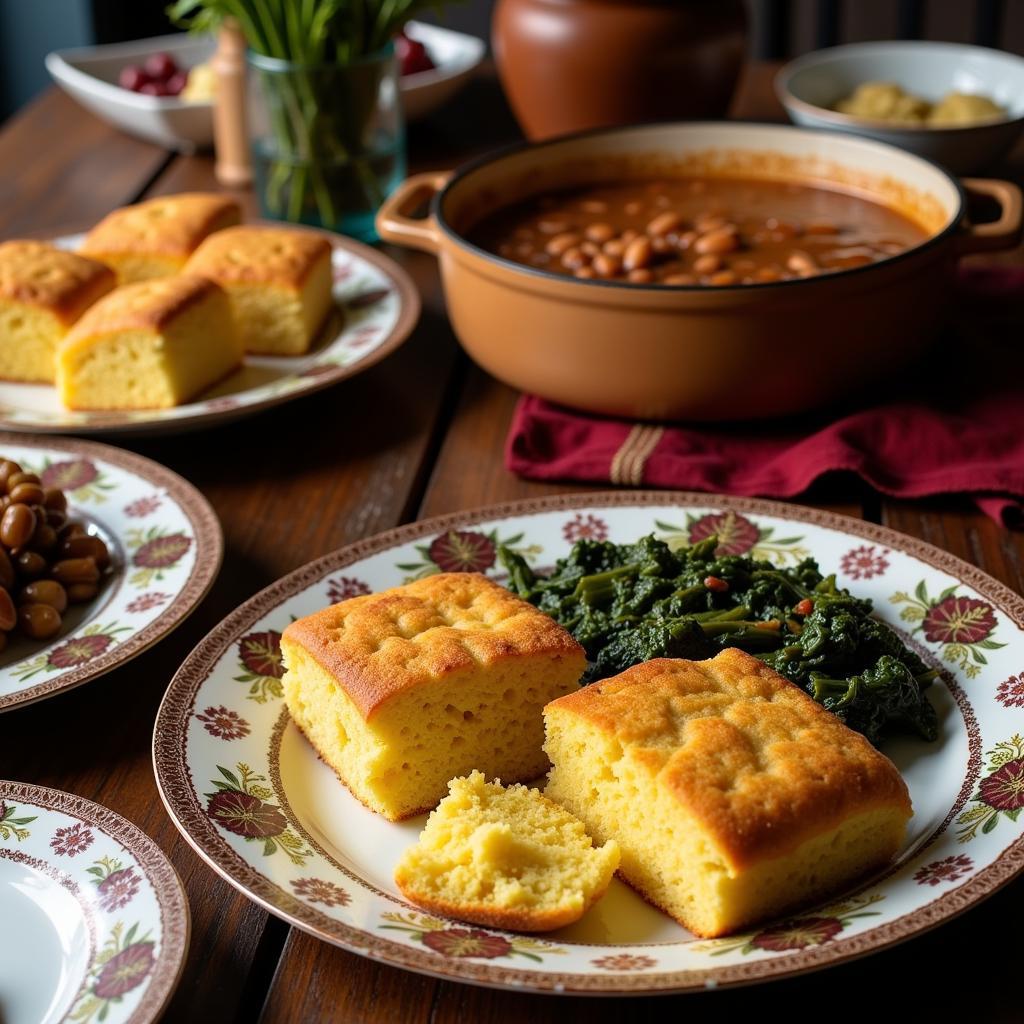Food In Demon Copperhead isn’t just sustenance; it’s a powerful symbol of survival, community, and cultural identity in the heart of Appalachia. From meager meals scraped together in times of hardship to shared feasts celebrating life’s small victories, food plays a vital role in shaping the narrative and highlighting the socio-economic realities of the region.
The Significance of Food in Demon Copperhead’s Narrative
Barbara Kingsolver masterfully weaves food into the fabric of Demon’s story, using it as a lens through which we understand his struggles and resilience. The scarcity of nutritious food reflects the poverty that grips his community, while the occasional shared meals symbolize the strength of human connection in the face of adversity. Food in Demon Copperhead isn’t just about filling empty stomachs; it’s about nourishing the soul and fostering a sense of belonging.
Food as a Symbol of Poverty and Hardship
Often, Demon’s meals are a stark reminder of the deprivation he faces. We see him scavenging for scraps, relying on government assistance programs, and experiencing the gnawing pangs of hunger. These depictions of food insecurity underscore the systemic issues that contribute to poverty in Appalachia. Kingsolver doesn’t shy away from portraying the harsh realities of Demon’s life, using food as a powerful tool to convey the depth of his struggles.
Shared Meals and Community Bonds
In contrast to the bleakness of food scarcity, shared meals in Demon Copperhead represent moments of hope and connection. Whether it’s a potluck dinner with neighbors or a holiday feast with chosen family, these gatherings provide a sense of community and offer a temporary respite from the challenges of everyday life. Food becomes a vehicle for fostering relationships and building resilience within a marginalized community. These shared meals, however, are often fleeting, further emphasizing the precariousness of Demon’s situation.
Food and Cultural Identity in Appalachia
The types of food Demon encounters also offer a glimpse into the cultural landscape of Appalachia. From traditional dishes passed down through generations to the processed foods that have become increasingly prevalent, food reflects the changing cultural landscape of the region. Traditional Appalachian cuisine, rooted in resourcefulness and connection to the land, plays a significant role in shaping Demon’s understanding of his heritage.
 Demon Copperhead Appalachian Food Culture: A close-up shot of a table displaying traditional Appalachian dishes, including cornbread, beans, and greens, highlighting the region's unique culinary heritage and the importance of food in its cultural identity.
Demon Copperhead Appalachian Food Culture: A close-up shot of a table displaying traditional Appalachian dishes, including cornbread, beans, and greens, highlighting the region's unique culinary heritage and the importance of food in its cultural identity.
Food in Demon Copperhead: A Reflection of Reality
Food in Demon Copperhead is a powerful symbol that goes beyond mere sustenance. It’s a reflection of the complex realities of poverty, resilience, and cultural identity in Appalachia. Kingsolver’s skillful use of food imagery enriches the narrative and provides a deeper understanding of Demon’s journey and the challenges faced by his community. The depiction of food in Demon Copperhead serves as a powerful reminder of the social and economic disparities that persist in America.
Conclusion: The Lasting Impact of Food in Demon Copperhead
The portrayal of food in Demon Copperhead leaves a lasting impact, reminding us of the fundamental role it plays in our lives, both physically and emotionally. From symbolizing hardship to fostering connection, food becomes a powerful metaphor for the human experience. The novel compels us to consider the social and economic factors that shape access to food and the importance of community in overcoming adversity. Food in Demon Copperhead is more than just a detail; it’s a crucial element that shapes the narrative and resonates with readers long after they finish the book.
FAQ
- What role does food play in Demon Copperhead? Food acts as a symbol of poverty, community, and cultural identity.
- How does food reflect poverty in the novel? The scarcity and often poor quality of food highlight the economic struggles faced by Demon and his community.
- How does Kingsolver use food to portray community? Shared meals represent moments of connection and support within the community.
- What does food reveal about Appalachian culture in the novel? The types of food, both traditional and modern, reflect the evolving cultural landscape of the region.
- Why is food such a powerful symbol in Demon Copperhead? It connects to basic human needs, highlighting both physical and emotional survival.
- How does food contribute to the overall theme of resilience? The characters’ resourcefulness in acquiring and sharing food reflects their resilience in the face of adversity.
- What message about food insecurity does the novel convey? It highlights the pervasive nature of food insecurity and its impact on individuals and communities.
Related Questions to Explore on Mina Cones Food
- What are some traditional Appalachian recipes?
- How can we address food insecurity in our communities?
- What is the role of food in literature and storytelling?
For further assistance or inquiries, please contact us: Phone: 02437655121, Email: minacones@gmail.com. We’re available 24/7 and located at 3PGH+8R9, ĐT70A, thôn Trung, Bắc Từ Liêm, Hà Nội, Việt Nam.